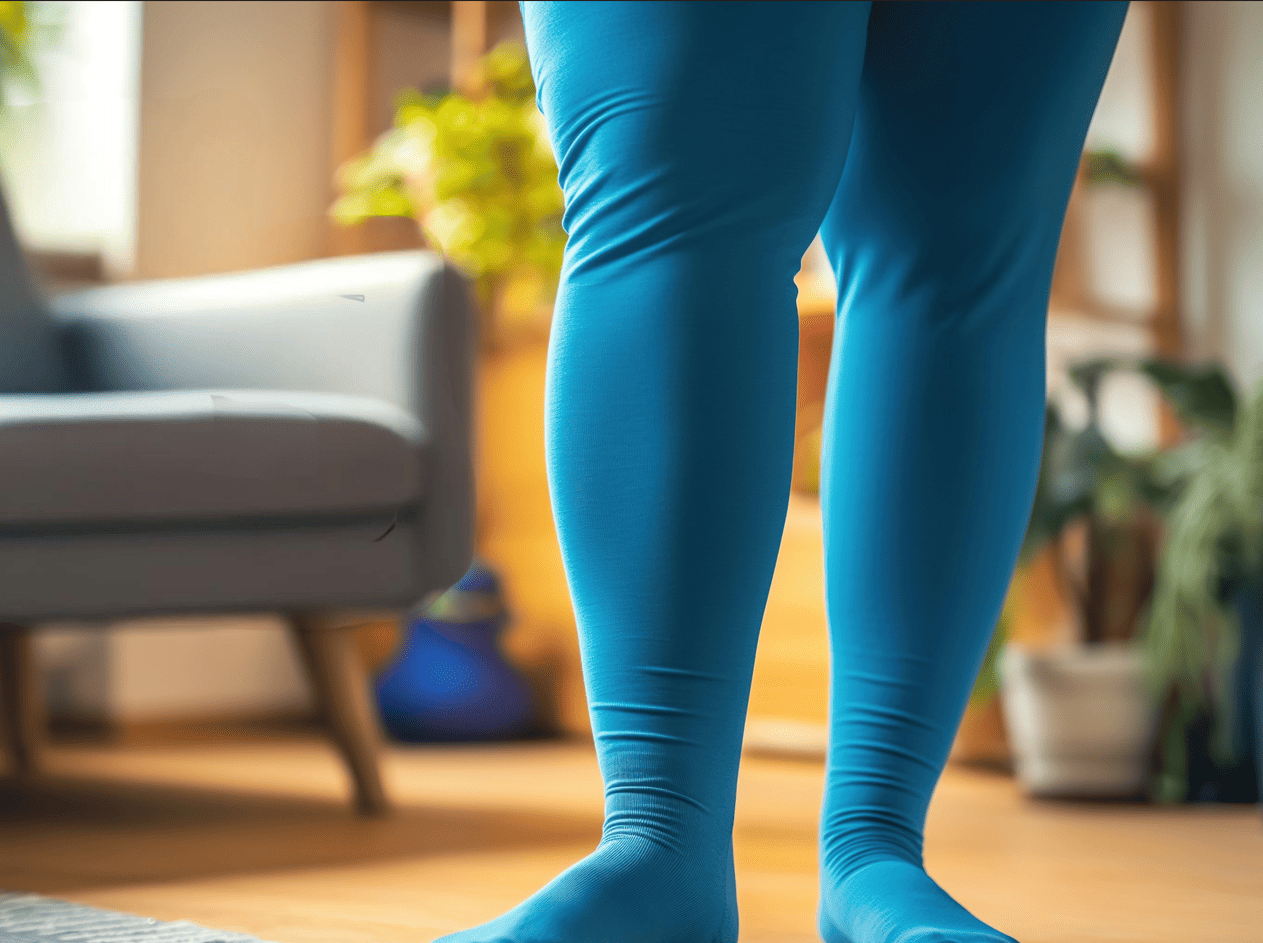
What Does Lipoedema Look Like - A Quick Understanding

What Does Lipoedema Look Like - A Quick Understanding
Lipoedema, also spelled lipedema, is a chronic condition characterized by an abnormal accumulation of fat, typically in the lower body. It primarily affects women and can cause significant pain and mobility issues. Here is a quick understanding of what lipoedema typically looks like:
Symmetrical Fat Distribution: Lipoedema usually causes a symmetrical accumulation of fat on the legs and sometimes the arms, sparing the hands and feet. The fat deposits can make the limbs appear disproportionately larger compared to the rest of the body.
Skin Texture: The skin over the affected areas may feel softer and appear dimpled, like cellulite. In advanced stages, the skin can become firmer and nodular.
Pain and Tenderness: Individuals with lipoedema often experience pain, tenderness, and easy bruising in the affected areas. The discomfort is not typical of simple obesity.
Column-like Appearance: The legs may develop a column-like or tree-trunk appearance due to the uniform enlargement from the hips to the ankles, often with a clear demarcation at the ankles.
Mobility Issues: As the condition progresses, the excess fat can interfere with mobility and increase the risk of developing other health issues like joint problems.
The condition may sometimes co-exist with obesity.
Types of Lipoedema
Lipoedema can present in several types, typically categorized based on the location of the fat deposits. Here are the common types of lipoedema:
Type I: Buttocks and Hips
Fat deposits are concentrated around the buttocks and hips, often creating a disproportionate lower body.
Type II: Buttocks to Knees
Fat distribution extends from the buttocks down to the knees. This type often includes a noticeable accumulation around the inner knee area.
Type III: Buttocks to Ankles
Fat deposits spread from the buttocks down to the ankles, giving the legs a column-like appearance.
Type IV: Arms
Although less common, this type affects the arms, causing a similar pattern of fat distribution, usually sparing the hands.
Type V: Lower Legs
Fat accumulates primarily in the lower legs, from the knees to the ankles.
Stages of Lipoedema
Lipoedema progresses through several stages, each characterized by the extent and nature of fat accumulation and changes in the skin and tissues. Here is a breakdown of the stages of lipoedema:
Stage 1
Appearance: The skin surface is smooth, but underlying fat is thickened.
Symptoms: Increased fat in the affected areas (typically the hips, thighs, and buttocks), but the skin remains soft and smooth. There may be some discomfort and easy bruising.
Stage 2
Appearance: The skin becomes uneven and dimpled (like cellulite), and larger fatty nodules can be felt under the skin.
Symptoms: The affected areas are more noticeably enlarged, and there is more pronounced pain and tenderness. The skin texture becomes irregular.
Stage 3
Appearance: Larger, more pronounced lumps of fat develop, and the skin appears increasingly deformed. Skin folds and hanging fat may develop.
Symptoms: Severe enlargement of affected areas with significant discomfort and mobility issues. The skin and tissue changes can lead to a decreased quality of life.
Stage 4
Appearance: This stage involves the presence of lipo-lymphedema, where lipoedema and lymphoedema coexist. The affected areas are very large, and fluid accumulation leads to further swelling.
Symptoms: Significant pain, severe mobility restrictions, and frequent skin infections. The skin may become hard and fibrotic due to chronic lymphatic obstruction.
Signs and Symptoms of Lipoedema
Lipoedema has several characteristic signs and symptoms, which can help in identifying and diagnosing the condition.
Symmetrical Fat Distribution: The fat is symmetrically distributed, usually affecting the legs (thighs, hips, buttocks) and sometimes the arms, but sparing the hands and feet. This symmetrical pattern is a key diagnostic feature.
Pain and Tenderness: Individuals with lipoedema often experience pain and tenderness in the affected areas. The tissues are sensitive to touch and may hurt without significant pressure.
Easy Bruising: The skin overlying the lipoedemic fat bruises easily, often without any significant trauma. This is due to the fragility of the small blood vessels in the affected areas.
Skin Texture Changes: The skin may become softer and have a dimpled appearance, similar to cellulite. In more advanced stages, the skin can become firmer and develop nodules.
Swelling: Swelling in the affected areas is common, particularly towards the end of the day or after prolonged standing or sitting. This swelling does not usually extend to the hands and feet.
Difficulty Losing Weight: Despite efforts to lose weight through diet and exercise, the fat in the affected areas remains resistant to reduction. This is because lipoedemic fat behaves differently from normal fat.
Mobility Issues: As the condition progresses, the accumulation of fat and swelling can lead to mobility issues. The increased weight and discomfort can make walking and other physical activities difficult.
Cuffing: A characteristic sign of lipoedema is the presence of a “cuff” of fat just above the ankles or wrists, where the swelling abruptly stops.
Living with lipoedema can lead to various emotional and psychological challenges, often resulting in frustration. Here are some common sources of frustration for individuals with lipoedema:
Chronic Pain and Discomfort: Persistent pain and tenderness in the affected areas can significantly impact daily activities and overall quality of life, leading to feelings of frustration and helplessness.
Physical Limitations: The accumulation of fat and associated swelling can make movement difficult, limiting the ability to engage in physical activities or exercise. This can lead to a sedentary lifestyle, further exacerbating feelings of frustration.
Difficulty Losing Weight: Many individuals with lipoedema find it challenging to lose weight in the affected areas despite adhering to strict diets and exercise routines. This can be discouraging and lead to feelings of inadequacy and frustration.
Body Image and Self-Esteem: The disproportionate fat distribution and changes in body shape can affect body image and self-esteem. Social stigmas and misunderstandings about the condition can also contribute to feelings of isolation and frustration.
Misdiagnosis and Lack of Awareness: Lipoedema is often misdiagnosed or overlooked by healthcare providers, leading to delays in receiving appropriate treatment and care. The lack of awareness and understanding of the condition can be a significant source of frustration.
Financial Burden: The cost of managing lipoedema, including treatments, compression garments, and potential surgeries, can be substantial. Navigating insurance coverage and out-of-pocket expenses adds to the financial strain and frustration.
Emotional Stress: The chronic nature of lipoedema and its impact on physical health can lead to emotional stress, anxiety, and depression. The emotional burden of living with a chronic condition can be overwhelming and frustrating.
Social Limitations: Physical limitations and body image concerns can lead to social withdrawal and reduced participation in social activities, contributing to feelings of loneliness and frustration.
Addressing these frustrations involves a multi-faceted approach, including seeking medical treatment, emotional support, and connecting with support groups or communities of individuals facing similar challenges. Understanding and acknowledging these sources of frustration can help in finding ways to cope and improve the overall quality of life for those living with lipoedema.
Causes of lipoedema
Lipoedema is a complex condition, and its exact causes are not fully understood. However, several factors are believed to contribute to its development:
- Genetics: There is a strong genetic component to lipoedema, as it often runs in families. Many individuals with lipoedema have a family history of the condition, suggesting a hereditary predisposition.
- Hormonal Factors: Hormonal changes appear to play a significant role in the onset and progression of lipoedema. The condition often begins or worsens during periods of hormonal fluctuation, such as puberty, pregnancy, and menopause. This suggests that female hormones, particularly estrogen, may influence the development of lipoedema.
- Gender: Lipoedema primarily affects women, which further indicates a link to female hormonal factors. While rare, men can also develop lipoedema, typically in cases involving hormonal imbalances or other underlying conditions.
- Obesity and Weight Gain: While lipoedema is distinct from obesity, weight gain can exacerbate the symptoms of lipoedema. Obesity may complicate the condition and make it more challenging to manage, but it is not considered a direct cause of lipoedema.
- Lymphatic System Dysfunction: There is some evidence to suggest that lipoedema may be related to issues with the lymphatic system. The condition can lead to poor lymphatic drainage, contributing to the swelling and fluid retention often seen in lipoedema.
- Inflammatory Factors: Chronic inflammation may play a role in the development of lipoedema. Inflammatory processes can contribute to the pain, tenderness, and tissue changes associated with the condition.
- Connective Tissue Disorders: Some researchers believe that lipoedema may be linked to underlying connective tissue disorders, which could affect the structure and function of the fat and surrounding tissues.
It is important to note that lipoedema is a distinct medical condition and not simply a result of lifestyle factors such as diet and exercise. Its management requires a comprehensive approach that may include medical treatment, physical therapy, and lifestyle modifications to alleviate symptoms and improve quality of life. Further research is needed to fully understand the causes of lipoedema and develop more effective treatments.
Treatment for Lipoedema
Lipoedema treatment is not a one-size-fits-all solution. It depends on your individual needs and preferences, as well as the severity of your lipoedema. There are multiple lipoedema treatments depending on the severity and the desired outcome. Let’s explore the top 3 treatments available for Lipoedema.
1. Liposuction
If you’re interested in liposuction as a means of reducing fat deposits in areas where they’re causing pain or discomfort, talk to your doctor about whether this procedure could be right for you. Liposuction can be used to remove excess fat from legs, arms and abdomen–areas where lipoedema typically occurs–but it won’t treat the underlying issue that causes those areas to retain watery fluid instead of storing fat like normal tissue would do.
2.Manual lymphatic drainage massage (MLD)
MLD helps improve blood flow throughout the body by manually stimulating lymph nodes through stroking motions made by hand over tissues affected by swelling or inflammation; this helps move fluid out of swollen tissues into surrounding healthy ones so they can perform their normal functions more efficiently without being weighed down by excess liquid buildup between cells.
3.Compression Therapy
Compression therapy is a type of treatment that uses special garments, wraps or bandages to help reduce swelling and inflammation in the body. Compression garments may be worn for a specific amount of time each day to help treat lymphedema; these garments are often made from elastic materials that provide gentle pressure on swollen tissues and may also contain cooling properties to help reduce pain and discomfort associated with swelling.
Diet, exercise and weight loss aren't effective in preventing lipoedema from progressing.
If you are struggling with lipoedema, and haven’t yet been diagnosed, it can be difficult to understand why your body is so different from other people’s. The good news is that there are treatments available for lipoedema that can help reduce the symptoms.
However, diet and exercise aren’t effective in preventing lipoedema from progressing. Lipoedema is a genetic condition and not caused by diet or exercise; so, although these things may help with weight loss (if one chooses), they won’t stop the condition itself from getting worse over time
Treatment is available and Dr Purbey can help!
Search...
Popular Posts
Categories
Tags
CONTACT US
OPENING HOURS
Monday to Saturday : 8 AM – 5 PM
Sunday: 9 AM – 6 PM
OUR ADDRESS
Dr Anuj Purbey, Manchester Private Hospital
New Court, Regents Place, Windsor Street, Salford, Greater Manchester, M5 4HB

- Before & After
- Customer Testimonials
- About Us
- Contact Us
- Blogs
- FAQs
- Privacy Policy
- Terms & Conditions





